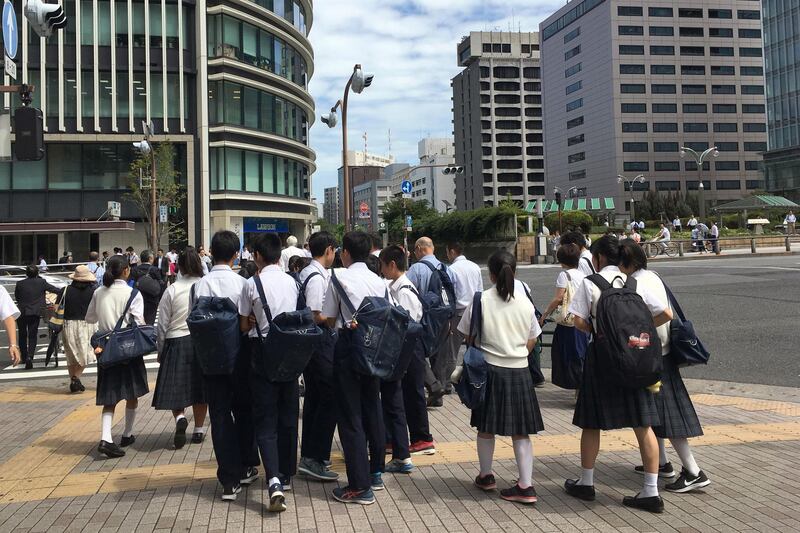With the new school year beginning next month, teachers and senior education managers will soon begin preparing for the autumn term.
Discussions in dynamic institutions will focus on continuous improvements with questions like: how can we do better than last year?
Targets might include things like increasing educational innovation or improving parent-teacher relations.
The very best schools, however, will also be discussing ways to reduce bullying.
The Organisation for Economic Co-operation and Development (OECD) undertook an international survey last year, which included a focus on peer victimisation, or bullying.
Out of 72 countries, the UAE had the eighth highest rate of victimisation, with more than a quarter of 15-year-olds reporting that they experienced bullying "at least a few times a month".
One of the reasons for this high prevalence might be related to the UAE's globally mobile population. UAE schools are filled with new arrivals, who often find themselves targets.
But beyond the numbers and the rankings are real children. And if even one child is being bullied, that is one child too many.
Most schools pay lip service to the idea of a zero tolerance policy on bullying, with the endgame being to reduce victimisation, if not eradicate it altogether.
Zero tolerance, however, focuses on detection and punishment rather than prevention.
Furthermore, it does little to discourage the type of bullying that flies below the radar: the insidious behaviour that often get rebranded and dismissed as “boys being boys” or “girls being catty”.
It’s easy to see how zero tolerance approaches might sometimes encourage under-reporting, misclassification and the minimisation of victim experiences.
The worst piece of advice I ever bought into as a child was “sticks and stones may break my bones but names can never hurt me”.
It's well-meant I’m sure but this rhyming couplet was composed long before the research on peer victimisation in childhood had been undertaken.
It turns out that names can hurt us and the psychological wounds, if unattended, can reverberate throughout lifetimes and down through generations.
The research is unequivocal: children who are verbally or physically abused by their peers have higher odds of developing severe mental health issues later in life.
A systematic quantitative review of all the existing research on this topic was published in a 2012 issue of Schizophrenia Bulletin. The study concluded that childhood adversity, including peer victimisation, is strongly associated with increased risk for later-life psychosis – or severe mental health issues.
_____________________
Read more from Justin Thomas:
[ In space, behavioural psychology and mental health are matters of life and death ]
[ What happens when amateurs misuse mental health terms? ]
[ Forget the decade of deceit – we are heading for a millennium of mistrust ]
_____________________
Beyond psychosis, the story is similar for other mental health concerns too. From depression and anxiety disorders to eating disorders such as anorexia nervosa, peer victimisation increases the likelihood that a child will grow up to experience one or more of these often debilitating psychological complaints.
The targets of bullying are many but the selection process typically involves discrimination. Bullies will frequently select targets who they perceive as being different or outsiders.
This discriminatory tendency shows up in what researchers have termed the immigrant effect, so named because of relatively higher rates of severe mental health issues among immigrants.
This effect was first reported in 1932 among Norwegian immigrants to the US and has since been noted repeatedly among different groups across many nations.
The primary finding is that immigrants tend to have higher rates of severe mental health issues than their counterparts still residing in their home nation. Perhaps more surprising, the children of these immigrants have even higher rates of severe mental health disorders, or psychoses, than their parents.
One proposed explanation for this is that the parents experienced victimisation as adults while their offspring experienced it in childhood, where its effects were even more devastating.
Whatever the motivations for bullying – ethnicity, accent, body shape – we are wise not to tolerate it. However, as well as rejecting it, we also need to actively cultivate and promote alternate behaviour.
But what is the opposite of a bully? The word itself is derived from the Dutch word boel, meaning brother. It was initially meant as a term of endearment but, as sometimes happens, the meaning was flipped and today the bully personifies the antithesis of fraternity and compassion.
The bully is cruel, discriminatory and inclined to form cliques. We need to ensure our schools are increasingly populated by students who are compassionate, accepting and inclusive.
Interestingly, we don’t seem to have developed an antonym for the word bully. Perhaps we don’t need it. We would, however, benefit from increasing empathy and morally sound decision-making skills among our young people.
Let’s keep the zero tolerance policy while simultaneously promoting values that are the polar opposites of those embodied by the typical, hopefully soon-to-be-extinct bully.
Dr Justin Thomas is professor of psychology at Zayed University





